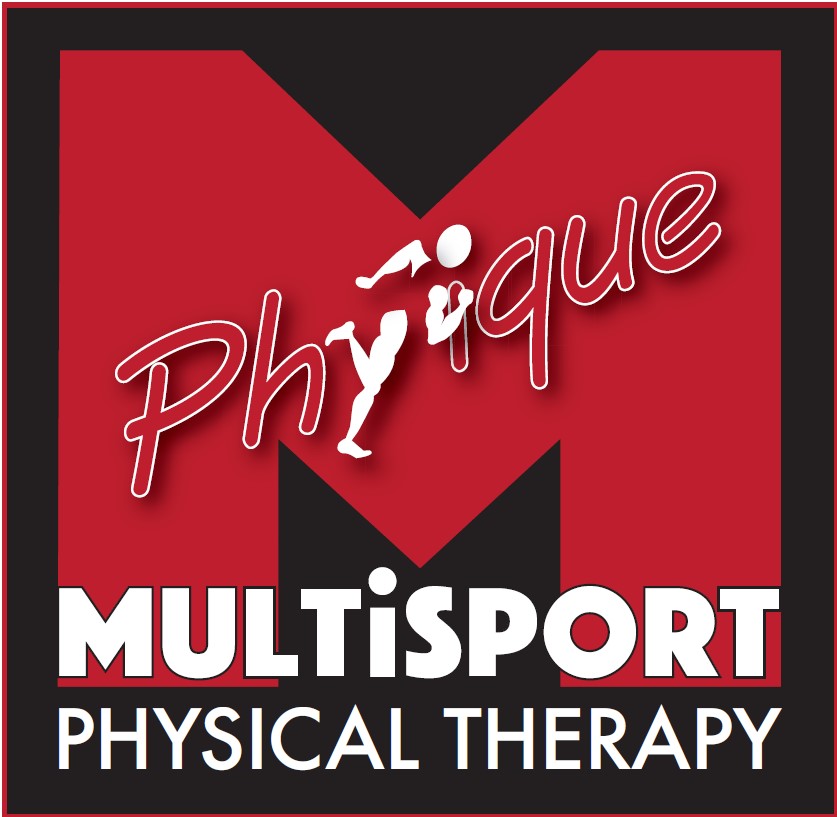Dr. Jonathan Toker

Dr. Toker, Jimena Florit, Jim McCann, DeeDee McCann (left to right)
I had the chance recently to sit down and talk triathlon with long time TCSD member Dr. Jonathan Toker. Jonathan's TCSD years have covered the entire spectrum from beginner to professional triathlete. In addition, Jonathan has developed the SaltStick line of products which should be a staple in any endurance athlete's nutrition plan. Please join me as we get to know this fascinating and fast entrepreneur!
Craig: What was your sports background before triathlon?
Jonathan: Triathlon was really my first “sport”, at least at a competitive level. As a youngster, I spent a lot of time outdoors doing sports like skiing, snowshoeing, canoeing, swimming, chopping wood, walking on trails- really, what one would call being active but nothing at an organized, competitive level. I had an old 10 speed racing bike that was way too big for me for a long time and didn’t get used much. When I was 15 I bought my own mountain bike, but used it only to ride to school and around town. I was also an avid gymnast with a trampoline at home (Costco model!). I attribute my strong climbing skills to well developed quads from hours of jumping on that thing. I never ran with any degree of interest until I was about 22. My first running workout was with TCSD track coach Tom Piszkin (inventor of Titanflex bikes) in 1998. He didn't know what start group to put me in, and I had no idea either. Tom: "How fast can you run a mile?" Me: "I don't know!"
Craig: You are originally from the Canada. What brought you out to California?
Jonathan: I grew up in an English-speaking area of Montreal and went to school in town, but my fondest recollections involved weekends and summers out of the city at our cottage, about an hour north and in the mountains. Summers were spent running amuck having adventures with my brother (5 years my senior) and staying close with my family. Winters involved both the joys and trials of dealing with snow. I went to McGill University for an undergraduate degree in Chemistry and on a whim, applied for graduate school at The Scripps Research Institute (TSRI) in La Jolla for which I was granted admission. I was the only one in my class who wasn’t of legal age to drink when I came out for the interview! I moved to San Diego in 1996 with 2 suitcases, 2 bikes, and an electronic keyboard and settled in UTC La Jolla and began my serious graduate studies in chemistry. That lasted about a month before I caught the bug of the outdoor life in California. I bought a used aluminium road bike (60cm, way too big!) and joined the San Diego Bike Club (SDBC) rides from UTC, learning how to ride in a pack. Actually, learning how to ride on a road bike. Yes, I still remember being unable to unclip at a stoplight and falling over. In 1997, I started to swim at the Shiley Health Center and every now and then went jogging on the trails in Torrey Pines. Meanwhile, I continued to study and begin my research towards getting a Ph.D. in chemistry. So the athletics were a great way to balance the cerebral work with some activity, with the added bonus of exploring the bounty of San Diego’s beauty and also a great way to meet people outside of TSRI.
Craig: What led you to take up triathlon and when did you join the TCSD?
Jonathan: By 1998 I had settled into a routine of riding on the weekends, either with SDBC or with a postdoc from Sweden. Our rides usually involved heading up to Escondido and 395N to Gopher Canyon and west to Oceanside and south along the coast. We rode with water only, and stopped once only, in Oceanside overlooking the pier, to eat some dark chocolate. No energy bars or sports drinks- when I think of those days it is hard to believe we ever finished the rides! Afternoons we usually spent recovering on the beach. I had started swimming with the Master’s group at Shiley during lunchtime, beginning a conversion of breaststroke to some semblance of crawl. I could not swim 25 yards front crawl. I loved the water. I was just really slow.
One Friday evening I was at La Jolla cove with my violin around 6pm, headed to one of those little cabanas overlooking the water and the sunset to play some music and enjoy the evening. I happened upon a group on the grass suiting up, laughing, chatting- they seemed to be having such a good time that I asked what they were doing- It was none other than Jim McCann himself (or so my memory tells me) who told me about the weekly cove swims, and the Tri Club of San Diego. Furthermore, he went on to say, there was a monthly club meeting later that night at the La Jolla Fire station just up the street, with Baywatch star Alexandra Paul as the guest speaker. I played to the sunset and decided afterwards to check out the club meeting. I don’t usually make impetuous decisions, but that night I joined the club, got my free De Soto singlet and decided “What the hell, I might as well try a triathlon someday”. I think that was in May, and by June I did my first club race at Glorietta Bay. The night before the race I couldn’t sleep- you can’t imagine how nervous I was, replaying the transitions over in my mind. I had never even watched a triathlon before, so I had no real idea what I was doing. I had a blast- though my legs felt like jelly after riding, I did pretty well, except I forgot to mention that I did the entire swim breaststroke. So I past a bunch of people on the bike and probably lost a few spots on the run. But I was hooked.
I signed up for the Carlsbad triathlon in July 1998 as my first real event, and I remember the day before the race at the expo, Gurujan walked me through the entire race, twice, including the transition area, the rack setup, etc… I raced in a Speedo and TCSD singlet on a new Trek 2300 Carbon-Aluminum bike with Zipp wheels- yes, I was already a tri geek. After the race, I remember overhearing two guys talking…"hey, did you see that kid who was swimming breaststroke?". If you haven’t already guessed it, that kid was me, and between a slow swim and cement legs off the bike, I managed a solid 5th in my age group- I was ecstatic.
Craig: What are some of your favorite old school memories of your early TCSD days?
Jonathan: TCSD was only about 300 people when I joined in 1998, and I got to know many of them pretty quickly. Club races had about 30-40 people max and were very low-key affairs. My fondest recollections usually involve food, including Bob Rosen’s annual Labor Day bike ride and Cowles mountain run-BBQ, the post-race potlucks, and the cove potlucks. Post-cycling Souplantation refueling (Craig, I know you loved these too!) are also high on the list. My favorite events were also Jim McCann's Borrego camping trips, especially the mountain scramble and marshmallow fights. I am fortunate to remain good friends with many of those I met in the early days including Dave Krosch, Preston Drake, Bill Gibbs, Osamu Chiba, Dee Dee McCann (and the upsetting loss of my very good friend Jim McCann in 2007) and others. I guess I should take this opportunity to admit that I am fully to blame for all the TCSD emails members receive, when I started up the Yahoo!Groups newsgroup in 1999 we started with just the board members to test it out. The group now numbers nearly 1,800 subscribers!
Craig: Those were the days! I have fond memories of doing 100 mile rides with you and then we’d nearly put Souplantation out of business with how much we would eat. What World Championship race have you done and how did you do?
Jonathan: I’ve only raced ITU Worlds once, in 2001 as a member of Team Canada. I qualified at an Olympic distance race in Drummondville, near Montreal, and proudly wore the Canadian team uniform in Edmonton. I remember meeting Thom and Laura McHale of Team USA for the second time (the first was in 2000 at Ironman Hawaii) and they made me feel at home swimming in the duck pond of Hawrelak park. It was a cool experience but I was a bit turned off by the commercial aspect of the national teams.
Craig: What Ironman distance races have you done and how did those go for you?
Jonathan: In March 2000, I had a huge bike crash at a bike race in Camp Pendleton and severely broke my collar bone and elbow. After surgery (Thanks, Roger Freeman, MD!) I was told that I might not be able to swim well again. Well, I went on to race the La Jolla Half marathon in April, the Rock ‘n’ Roll Marathon in June and Ironman Canada in August. As my first Ironman, I had only hoped to finish, but ended up in 9:49 and a spot to the big show in Kona. I’ve raced a total of 9 Ironman events including twice in Kona (very rough days at about 10:50) and a PR at Ironman Brazil in 2004 of 9:13. Each race became easier. I could barely walk for days after my first Ironman and I fainted in the medical tent after Ironman Kona in 2000 but by 2003 I was back to some training within a week. I never did accomplish my goal of going sub-9:00 but came close with a 9:18 at Ironman Canada while I was ill.
Craig: What was that like to win your age group at Ironman Canada?
Jonathan: I’ve raced Ironman Canada 3 times: 2000, 2001, and 2002 with solid finish times each year. As an event in my homeland, I always felt very patriotic standing on the podium. After winning the Wildflower Half Ironman overall amateur title in 2001, I decided to “go pro” in 2002. Now step back for a moment to consider that just a few years prior I had never done a triathlon, swam only breast stroke, and had never done a track workout. So winning my age group at Ironman Canada in 2001 was very special for many reasons. I had a really tough time recovering and racing Kona so soon afterwards however, and so it was in 2002 when as a neo-pro racing Ironman Lake Placid, I qualified to race Kona as a pro (through a roll-down slot) and I decided not to race the Championship race for a third year in a row, but rather to take some time off and train better for a future performance. I haven't taken a spot for Kona since...
Craig: You have done a lot of triathlon traveling in your time. What advice would you want to share with people who are considering an international triathlon?
Jonathan: I’ve been very fortunate to have traveled to 48 countries so far, and triathlon has added a few to that total. International destination races are always fun because of the unexpected. Last year for example at the Challenge France, they kept athletes from moving past the deep water start line by shooting a full-blast fire hose along the line, showing no mercy and pelting people in the face if they went ahead of the line. Our pack still started before the gun, but at least we all started on the same line. At Ironman Brazil in 2004, race officials were still setting up the timing mats for the swim exit while we were on our first swim lap! Foreign hospitality can often be very welcoming and if you approach race travel with an open mind and attitude that the race is but one small part of the trip, the world is your oyster!
Craig: For many years, my wife Laurie and I both have been religious users of your SaltStick products. How did the SaltStick line of products come to be?
Jonathan: The original concept for a capsule dispenser developed in 2002 as part of my professional triathlon racing needs... the age-old problem of where to keep electrolyte capsules. I had experienced serious cramping issues during any event longer than a half Ironman, and had found the best solution was a mixture of electrolyte capsules, potassium and magnesium tablets. The engineering of the SaltStick® dispenser took 4 years and the contributions of a San Diego machine shop, other professional triathlete testers, and hundreds of hours of effort.
During the development of the dispenser, I decided to put my Ph.D. in chemistry to work and to formulate a science-based electrolyte capsule instead of trying to "make do" with a mixture of existing products. SaltStick® was developed as a study of scientific literature on electrolyte loss in sweat, highly bioavailable ingredients, and field testing. SaltStick Caps have since become the accepted standard for electrolyte replacement capsules.
The first dispenser prototypes were shown at the Interbike industry trade show in Las Vegas in September 2005 and used by top athletes at the Ironman World Championship in Hawaii a few weeks later. The first commercial sales were at the California Ironman 70.3 event in March, 2006. SaltStick® products are now sold in over 20 countries around the world.
Craig: What is unique about SaltStick?
Jonathan: SaltStick is the only electrolyte capsule that was formulated to closely resemble the electrolyte profile lost during activity, with the right amount of sodium, potassium, calcium and magnesium available in a form and quantity the body can absorb. I know this sounds like a marketing piece, but when you have the past 4 years male winners and 9 of the top 15 pro men at Ironman Hawaii in 2009 using the product and knowing that I don't pay any of them for sponsorship, I think you can make your own conclusions about the functionality of the product. SaltStick Caps is also the only electrolyte replacement that contains vitamin D that helps the body with the absorption of calcium. I've also gone far beyond expectations by ensuring that each and every lot of SaltStick Caps is tested to be free of banned substances (per WADA and the IOC standards) so even age-groupers can be assured of a clean product. The capsules are made in a pharmaceutical-level facility (GMP certified) and the vegetable capsule contains just electrolytes: no herbal ingredients, fillers, sugars, etc... and they are gluten free. You can read more at www.SaltStick.com
The dispensers are one-of-a-kind in the world, so you'll see bikes outfitted with the recognizable red and yellow nozzles in magazines and on a bike rack near you. There is no other way to contain and dispense capsules (of any sort) so easily on the bike or from a race belt while running. Keeping the capsules dry and easily available is so important as part of a successful race strategy.
These days, there is no excuse at all for electrolyte deficiency induced cramping. Focus on providing your body with the right amount of the right electrolytes so you can get to the real business at hand of racing at an athletic level.
Craig: What is one of your funniest training or racing stories?
Jonathan: One morning I went into the lab really early and set up an experiment to boil (reflux) while I headed off to the swimming pool at the gym a few buildings away. I had just finished my warm-up set when one of my colleagues ran over and got my attention. He told me that my reaction had just exploded and destroyed part of my reaction area and made a huge mess! I got changed quickly and shamefully headed back to the lab to find the mess. Fortunately nobody was injured and it wasn't that serious but it was a real mess to clean up and I know the stains on the walls and floor are still there 10 years later! It turns out that you actually need to open the pressure-relief valve on top of the condenser when you have something boiling. Now I know. I was able to get back in the pool that afternoon to finish the set...
Craig: What are your future triathlon related goals?
Jonathan: I have shifted my current race focus to trail running events for a change of pace. There is something quite magical about trail running, the places where you can go and the distances one can cover. I'm fortunate to live in an area (Newbury Park) that is proximate to endless trails. Meanwhile, I'm still cycling and swimming enough to race a tri at a high level when the desire strikes. Plus, I need to stay fit to hang with all the visiting pros. Can't show weakness climbing Latigo Canyon road with an Aussie in tow! In 2010, I plan to race the 35K UltimateXC in Mt. Tremblant, Canada, the 3-day solo Trans-Rockies Trail Race in Colorado and the uphill trail Jungfrau marathon in Switzerland among other local races like the So. Cal. XTerra series.
: #ffffff;">SaltStick goals are also expanding in both some new product development, and wider distribution of the products. Teams like the New York Jets have opted to use SaltStick and I'm hopeful that the product can benefit the performance of additional athletes in other sports.
Craig: Do you have a nickname?
Jonathan: I've got a few. TCSD-given nickname is "Rocketboy" that was shouted to me during a duathlon on Fiesta Island. Some very fast Aussie mates have given me the nickname "JTo" (rhymes with JLo).
Craig: You are definitely Rocketboy! Thank you for sharing your story. You are a good friend of everyone in the TCSD and we wish you the best of success with your racing and business goals in the future.
Craig Zelent is a USA Triathlon Level 1 Certified Coach. Craig can be reached at 760-214-0055 or tricraigz@yahoo.com.








